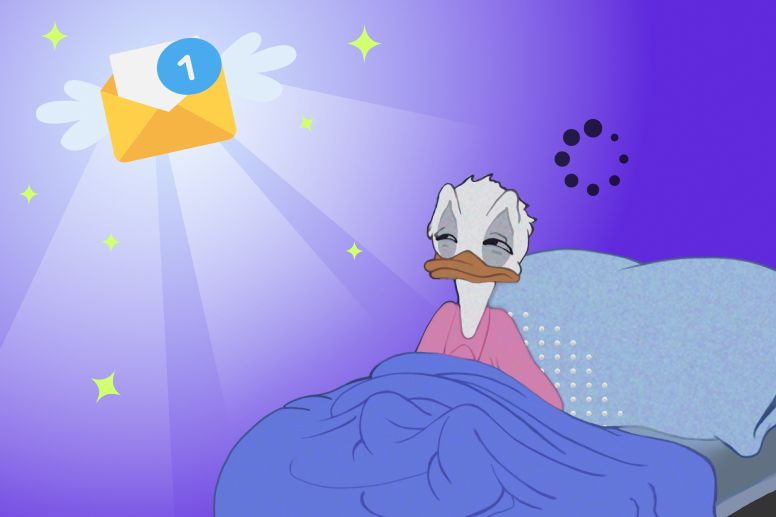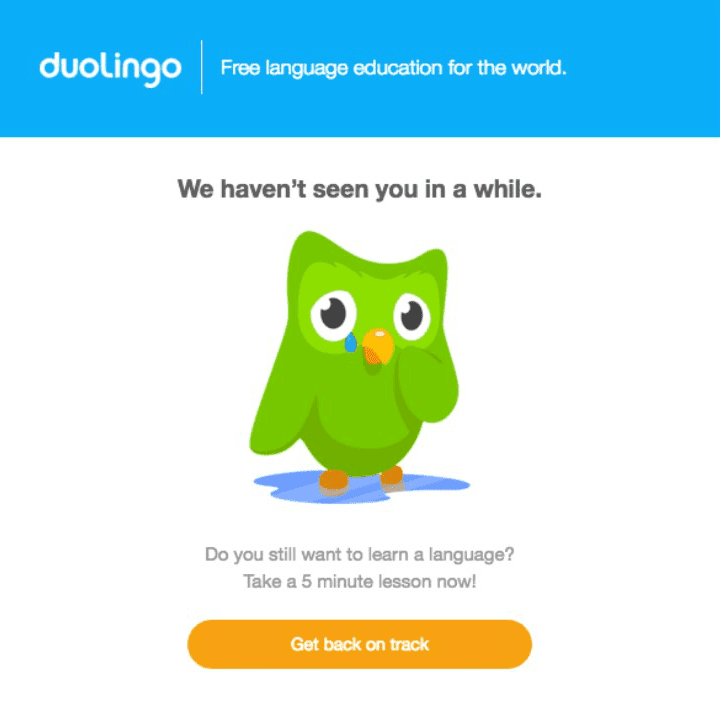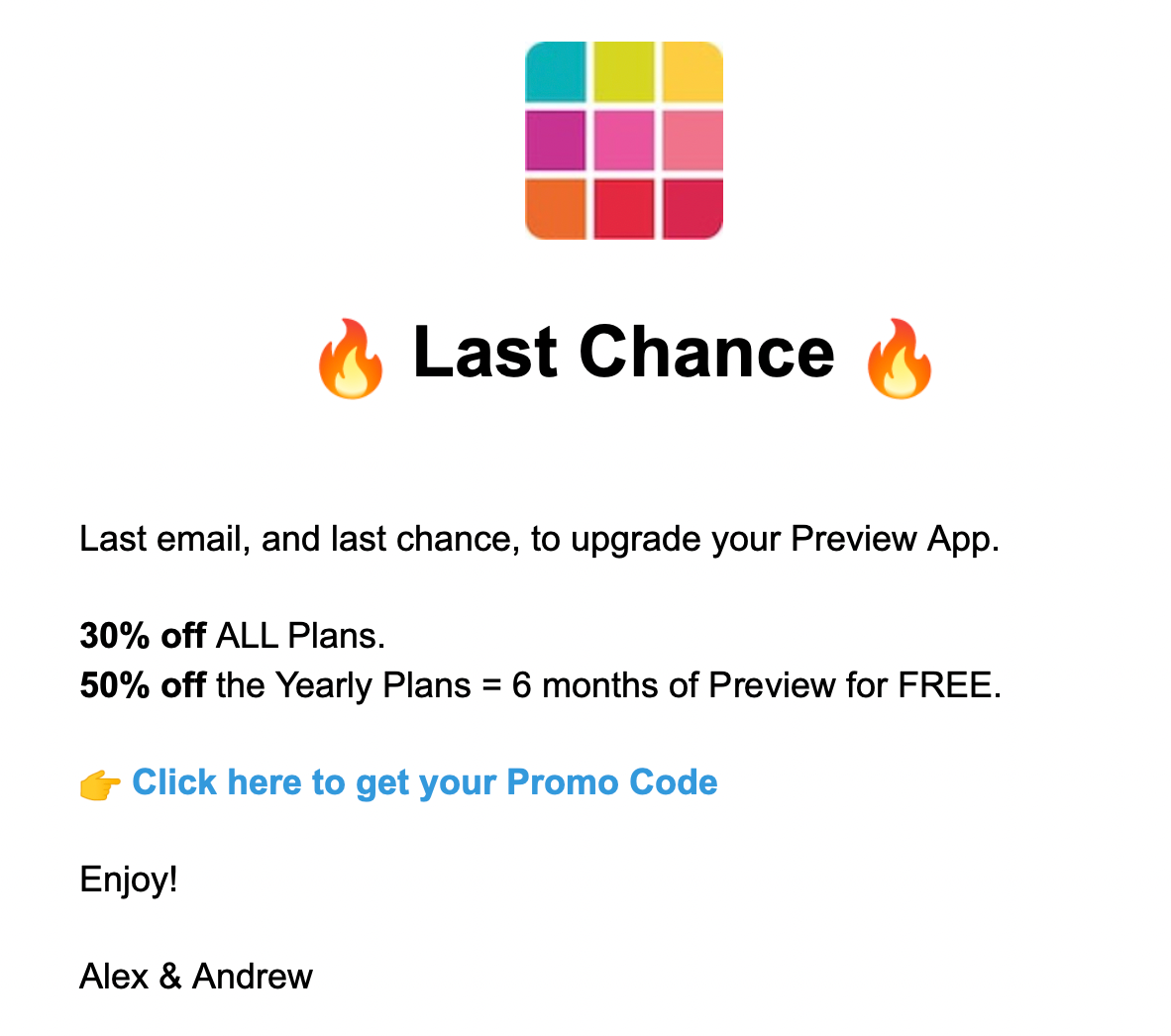How to Reactivate Inactive Email Subscribers

About 333 billion emails are sent every day worldwide, and by 2025 the number will grow to 376 billion. Email is not inferior to messengers and other communication channels. However, users do not read all emails: the average Open rate — 25%. A click-through rate, and consequently the number of purchases, is even lower. That's why it is vital to draw the attention of subscribers wisely. Not all customers who receive your newsletter are active users. Some people may simply lose interest in your content. When subscribers do not read the emails, the business loses money — the company wastes marketing budget on newsletters and worsens the reputation of its IP address.
The situation is reversible if you carry out reactivation campaigns. In this article, you will learn about reactivation.
What reactivation emails are and why they are important
Reactivation, also known as re-engagement, is a strategy that involves sending out trigger emails to subscribers who have stopped responding to email newsletter: open emails, click the links or purchase products from the newsletter.
Reactivation newsletter revives subscribers who have been «sleeping» for several months. This newsletter does not include «dead» users — those who have subscribed to your newsletter but have never opened your emails.
Subscribers become «sleeping» if they have not been active, on average, between three to nine months. It is important to consider the frequency and interval of newsletters. If you send one email a month, then it is too early to consider your subscriber «sleeping» after three months. The subscriber may have missed the emails.
Why reactivation emails are necessary
Reactivation of customers returns users to communication with the business, as well as:
- Increases sales — discounts, bonuses and other special offers in reactivation campaigns encourage a quick purchase.
- Saves the budget on email marketing — the cost of a newsletter depends on the number of addresses in the database, and reactivation deletes unnecessary ones from there.
- Improves the reputation of the sender — if many subscribers do not open emails from the same address, the provider considers the sender unreliable. Keeping only active subscribers means preserving the reputation of the address.
Subscriber reactivation strategy
There are three ways to revive «sleeping» users:
- Temporary ignoring — exclude «sleeping» users from the main newsletter, leave a digest or send emails that worked well before the activity stopped. Look at the result: if the user returns, add them to the main newsletter. If the user remains inactive, delete them from the database.
- The last chance — send one reactivation email. If the user does not interact with it, delete them from the database.
- Series of emails — it is a sequence of emails that depends on the user's reaction. If the user does not respond to one email, send them another and so on.
Steps to reactivate subscribers
1. Determine the causes
Why subscribers «fall asleep»:
- Subscribers are no longer interested in the content of your email newsletter.
- The content does not meet the expectation of subscribers.
- You send too many emails.
- The user changed their email address because of the loss of a previous one or job change (the subscription from a corporate address).
- Your emails are not adapted for mobile devices.
- The user subscribed because of the bonus, not to receive information from the company.
How to find out the reasons: conduct a survey and analyze previous newsletters sent to «sleeping» users.
2. Segment the audience
A click-through rate (CTR) of a segmented campaign is 100% higher than for campaigns without segmentation. Reactivation is no exception. The types of «sleeping» users differ from each other and require a different approach.
| Type | How to reactivate | What to offer |
|---|---|---|
| Do not open emails for N months | Interest the user in a topic, an attractive offer | Survey, discount, secret content |
| Open emails, but do not click the links for several months | Show the value of your content, interest the user in profitable offers | Relevant content, discounts and gifts |
| Open emails, click the links, but do not make purchases for N months | Show the possibility of lost profits | Discount with a limited validity period |
Exclude «dead» subscribers from your newsletter immediately. How to delete inactive subscribers: mark those who have never opened your emails. Probable reason — invalid email address or subscription for bonus. «Invalid» means an incorrect or outdated email address, or a spam trap. However, a valid email address may also be «dead» because the user receives emails, but does not open them.
3. Set reactivation limits
You cannot remind the customer about yourself forever — it is not profitable and your emails will go to spam. However, sending one email is not the most effective way. It is better to send a series of three to five emails.
4. Offers for return
Offer fewer emails — update the subscription settings. You can also send a bonus as a thank you for the fact that the user stays with you.
Be sentimental. Describe in your email how you miss the subscriber:
 Sentimental reactivation email
Sentimental reactivation email
Offer an alternative channel to get information. For example, social networks instead of an email newsletter.
Make a unique and time-limited offer: discount, free consultation, delivery, new product.
 Reactivation email with a unique offer
Reactivation email with a unique offer
- Make a joke to make your subscriber laugh — humour distinguishes your emails from others in the inbox.

Intrigue your subscriber. For example, you can use an intriguing subject line, or share something standard or unusual. Use content that you wouldn’t normally use in your niche.
Apologize to subscribers. If you send too many emails and, especially, advertisements, show your subscribers that it is your fault and you will improve the situation. Such a move will increase the loyalty of the audience. There was a technical failure on your website or there were errors in previous emails — apologize for them, too. Even if the subscriber did not notice the error, curiosity may force them to open your email and find out what happened.
Conduct a survey — this is a way of reactivation and a tool for collecting analytics on users. It is not necessary to ask only about the quality of the content or ask to rate your company. For example, you can ask your subscribers to tell an interesting story about your service.

Say goodbye radically — give your subscriber an ultimatum, according to which you will delete them from your mailing list if they do not open this email. Example of the subject of such an email: «Last warning! 3, 2, 1… before you will be deleted from the database».
If your newsletter includes only advertising, suggest subscribers to change the type of content. For example, they can receive only new articles from the blog and no advertising.
Which offer to choose
One email is unlikely to bring results, so send a series of emails. Each email should correlate with the previous one and express reaction to the user's activity. For example, the user responds to your offer in the first reactivation email and agrees to receive fewer emails. In this case, thank the subscriber and send them a bonus. If the user does not react, send them another email from the series with a new offer.
Example of a series:
- Ask questions: «Why don't you answer? Is something wrong?»
- Reduce the number of emails: «No more emails, but less… it's up to you».
- Special offer: «Come back and get a 50% discount on everything».
- Say goodbye: «Goodbye! This is our last email».
5. Create email layout design correctly
Email subject and email preheader are the most important things in the email newsletter. 48% of users open emails only because of the subject. At the same time 69% of recipients move emails to spam if they do not like the subject. Be creative and as brief as possible, then there are more chances of successful reactivation.
Let's take a look at a few examples:
- Manicube: “Don’t Open This Email”
- TicTail: “Boom shakalak! Let’s get started.”
- Digital Marketer: “Steal these email templates…”
- Envira: “I’m deleting your Envira account”
- Vivino: “We are not gonna Give Up on You!”
Design and text of the email also matter and determine whether the user will finish reading your offer. Logical structure with semantic blocks, brevity (few people like long reads), neat layout — consider all the details.
Personalization of newsletters. Show the subscriber that they are important to you — use their name, create a personal promo code and/or a list of products based on previous purchases.
Add a CTA button with a simple action. If the user opens your email after months of being inactive, it shows that reactivation is working. However, the purpose of the business is to sell, so do not forget about a CTA button to motivate users to buy.
6. Test the options
Reactivation emails are a non-standard newsletter, so look for what is effective here. Do not send the same emails to everyone. Divide «sleeping» subscribers into groups within segments (500-5000 contacts) and test different options of email subjects, design, text, CTA buttons.
Common Mistakes in Reactivation Emails
Identical emails. Just sending ten identical emails to the user is a failed strategy that resembles ordinary spam.
Too many reminders of yourself. It is more likely to irritate the user rather than lead to their return. Do not exceed the limit of three to five reactivation emails and delete users who have not returned.
Newsletter without segmentation. Do not send identical offers to everyone. For example, why offer the user to go to a social network if they click the links in your emails but do not buy? The user has problems with the product rather than with the communication channel. Offer a discount or special purchase conditions.
Sending out your newsletter to «dead» subscribers. Accept it — those users who have never opened your emails are unlikely to revive. You will simply waste your resources and budget and ruin the reputation of your address.
How to avoid the need for reactivation
Steps to take to keep subscribers «awake»:
Analyze your newsletters and audience, react if subscribers do not like some emails, get rid of ineffective subjects, texts, designs and CTA buttons that are least clicked on. Study requests of customers, respond to them in your newsletters, then your emails will always remain relevant.
Keep track of the subscriber's life cycle and predict the moment of «falling asleep» — conduct analytics on newletters. If you know that, on average, subscribers stop being active after three months, send an email that gives a discount or grants access to secret content in advance.
Keep in touch with the users from the moment they subscribe — create a series of welcome emails that will show your subscribers that they are important to you. Personalize your newsletter, make individual lists of products and content according to the user's interests, ask for an opinion about your content.
Do not send too many emails. Even the most loyal subscribers can unsubscribe because of it.
Conclusion
Reactivation is a campaign for inactive subscribers who have not opened your emails, clicked the links and purchased anything for about three to nine months. Reactivation campaigns aim to win back these subscribers.
Reactivation newsletter is carried out after finding out the reasons for subscriber inactivity and segmentation of the audience. The most successful strategy is to send a series of emails connected to each other (no more than five emails).
If the user does not react to the reactivation series, delete them from the database. It is pointless to keep «sleeping» subscribers because it is a waste of the marketing budget. Besides, it damages the reputation of the sender's IP address.
You might be interested in:
Looking for the ways to prepare for the upcoming challenges in email marketing?
Read moreHere are a few examples of how a good marketing automation strategy can be applied to the education sector.
Read moreThe second part of the article ”How to better understand the customer”. We figure out how and why you need to automate the customer journey on the example of 8 main mailing scenarios.
Read more